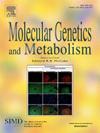Agreement between the Amsterdam Neuropsychological Tasks and the Cambridge Neuropsychological Test Automated Battery in theassessment of PKU patients and healthy controls
IF 3.7
2区 生物学
Q2 ENDOCRINOLOGY & METABOLISM
引用次数: 0
Abstract
Background
Several neuropsychological testing batteries have been used to assess and monitor neurocognitive functioning in healthy individuals and patients. Two of these test batteries, the Amsterdam Neuropsychological Tasks (ANT) and the Cambridge Neuropsychological Automated Test Battery (CANTAB), have indicated impairments in early- and continuously treated phenylketonuria (PKU) patients. However, the tasks of these batteries have never been cross-validated. This study aims to establish the comparability of the two test batteries in the assessment and monitoring of PKU patients and healthy controls.
Methods
22 PKU patients and 19 controls of various ages (7–67 years old) were tested twice, once using tasks from the ANT and once using tasks from the CANTAB. Tasks of the two batteries were matched based on the neurocognitive functions they (were deemed to) assess, including motor skills, emotion recognition, sustained attention and executive functions (working memory, inhibitory control, and cognitive flexibility). Correlation matrices were used to assess the specificity of the correlations between tasks assigned to similar skills, versus non-related tasks.
Results
Correlations between matched tasks from the ANT and CANTAB ranged from moderate to strong (range ρ: 0.50–0.84, P < 0.001), with strong correlations (ρ > 0.70) for emotion recognition, cognitive flexibility and sustained attention. These correlations remained significant after correcting for age. The strongest correlations were generally found between tasks assigned to require similar skills a-priori, validating the matching between tasks.
Conclusion
Overall, there was a good level of agreement between ANT and CANTAB tasks, especially in emotion recognition, sustained attention and the broad construct of executive functioning. These results suggest that a number of ANT and CANTAB tasks assessing the same functions may be used and interpreted interchangeably, which would support a better integration of neuropsychological research in PKU.
阿姆斯特丹神经心理任务和剑桥神经心理测试自动化电池在PKU患者和健康对照评估中的协议
背景:一些神经心理测试电池已被用于评估和监测健康个体和患者的神经认知功能。其中的两个测试,阿姆斯特丹神经心理任务(ANT)和剑桥神经心理自动测试(CANTAB),已经在早期和持续治疗的苯丙酮尿症(PKU)患者中显示出损伤。然而,这些电池的任务从未被交叉验证过。本研究旨在建立两种测试电池在评估和监测PKU患者和健康对照中的可比性。方法对22例PKU患者和19例不同年龄(7-67岁)的对照者进行两次测试,分别使用ANT和CANTAB进行测试,根据两组被认为评估的神经认知功能(包括运动技能、情绪识别、持续注意力和执行功能(工作记忆、抑制控制和认知灵活性)对两组任务进行匹配。相关矩阵用于评估分配给类似技能的任务与非相关任务之间相关性的特异性。结果ANT和CANTAB匹配任务之间的相关关系从中等到强(ρ范围:0.50-0.84,P <;0.001),具有强相关性(ρ >;0.70)对情绪识别、认知灵活性和持续注意力的影响。在校正年龄后,这些相关性仍然显著。最强的相关性通常被发现分配给需要相似技能的任务之间的先验,验证任务之间的匹配。结论总体而言,ANT任务和CANTAB任务在情绪识别、持续注意和执行功能的广义结构方面具有良好的一致性。这些结果表明,许多评估相同功能的ANT和CANTAB任务可以互换使用和解释,这将支持PKU神经心理学研究的更好整合。
本文章由计算机程序翻译,如有差异,请以英文原文为准。
求助全文
约1分钟内获得全文
求助全文
来源期刊

Molecular genetics and metabolism
生物-生化与分子生物学
CiteScore
5.90
自引率
7.90%
发文量
621
审稿时长
34 days
期刊介绍:
Molecular Genetics and Metabolism contributes to the understanding of the metabolic and molecular basis of disease. This peer reviewed journal publishes articles describing investigations that use the tools of biochemical genetics and molecular genetics for studies of normal and disease states in humans and animal models.
 求助内容:
求助内容: 应助结果提醒方式:
应助结果提醒方式:


